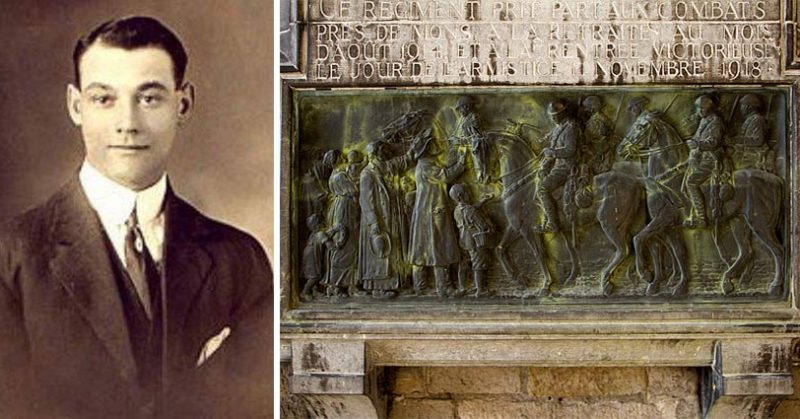There were an estimated 66,000 Canadian soldiers who were killed during the First World War. George Lawrence Price was one of them.
By many accounts, during what has been termed ‘the war to end all wars,’ Private Price’s service was quite ordinary, except that he is generally believed to have been the last British Commonwealth soldier killed before the cease-fire took effect at 11 a.m. on 11 November 1918.
But it’s where Price was buried that links the start of this deadly campaign to its end. This is perhaps the most agonizing reminder of the senselessness of war, notes a spokesperson from the Canadian War Museum.
Official accounts reveal that Private Price was shot in the chest by a sniper at approximately 10:50 a.m. on the last day of the war, while on building-to-building patrol in Ville-sur-Haine, Belgium. The 25-year-old soldier of A Company, 28th Canadian Infantry Battalion, died from his wound shortly thereafter, just two minutes before the official armistice. He was later buried at the Communal Cemetery, which is now Belgium’s St. Symphorien Military Cemetery.
In the same cemetery, only 30 meters away, are buried the remains of the first British Commonwealth soldier to die in the war, Private John Parr, who was killed on 21 August 1914. It is recognized that there is really something symbolic here in this cemetery; one might also grasp something about the futility of war.
One can see the burial site of the first soldier killed; understand the symbolism of the retreat of the British armies, and then see something of the mobilization of millions of soldiers. Then after the colossal battles around the world, on the seas and oceans, on many continents; empires have fallen, and all of the conflicts bring us back to the start line.
The Canadian War Museum recently obtained Price’s war medals and a memorial plaque from the Royal Canadian Legion in Kentville, Nova Scotia. At the Legion, they had been on display, but for decades were mostly unnoticed by the rest of the country and even by his family.
Private Price’s nephew, George Barkhouse, now 87 years old, didn’t even know the medals existed until he saw them at the Legion. Barkhouse didn’t know much about his uncle when he was younger, and there was hardly any family participation in tributes of his death until a footbridge, in Price’s honor, was built in 1991 over the Canal du Centre in Ville-sur-Haine, Belgium.
The 50th anniversary of Price’s death was commemorated in 1968 by his surviving wartime comrades. They placed a plaque on a house near the site where he died. Later the house was demolished, and the location was enshrined in a brick and stone monument.
There is no official account that indicates why Price had exposed himself to a sniper’s bullet. The commanders had been ordered to tell their men to ‘go to ground’ until the armistice was in place. No soldier wanted to be the last one of the war to meet his maker. But for reasons that are still unknown, Price became that last fatality. Some say that there was a young woman who waved at him and he rose from his position, perhaps hoping to kiss her while becoming the first liberator.
Private Price was born in Falmouth, N.S., and was recruited into the Canadian Armed Forces in October 1917, while working as a farmhand in Saskatchewan.
Of the hundreds of medal collections displayed by the museum, the Price medals hold a symbolic significance because, in fact, they are the medals marking the end of World War I.
But each set of medals is paramount in helping Canadians to understand and to never forget the many sacrifices that Canadian soldiers made to shape Canada’s history, National Post reported.
Things get lost over time, but in the end, the important thing is that these things find a home.
An exhibition commemorating the Last Hundred Days campaign of World War I will be on display at the Museum in 2018 and a significant part of the display will be the Price medal set.
